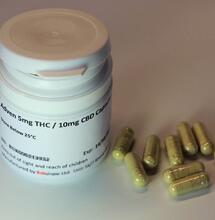PYRETHRUM
_137.jpg)
How long is pyrethrum toxic to humans? I sprayed some plants three times with it to control mites on plants that had just started flowering and am concerned that they will be toxic even if I stop using this pesticide now.
These buds are weeks away from full ripeness. Picking them now would be like harvesting green peaches.
Pyrethrum is a natural pesticide made from the dried flowers of C. cinerarifolium, a member of the daisy family that is closely related to chrysanthemums. It has been used as a pesticide for plants and gardens, stored foods and for humans and livestock for hundreds of years in its native area, Dalmatia, the northern Caucasus. Today, 90% of the pyrethrum we use is grown in Kenya.
The chemical pyrethrin is obtained from the seeds found in the dried flowers by soaking them in water. Pyrethrin is both toxic and repellant to all insects. It works by opening their sodium ion channels, which regulate their nerve signaling. As a result the neurons fire continuously, which fatigues and inactivates the affected muscles.
In quantities that they are likely to encounter it, pyrethrum is safe for most wildlife including birds and mammals. It is toxic to fish and marine invertebrates and is harmful to amphibians and reptiles. Natural pyrethrum biodegrades in the presence of sunlight and oxygen in a few days.
Pyrethrum has been used agriculturally, for personal hygiene (de-licing) and as
an insect repellant for a long time. It is considered one of the safest pesticides available. In fact, the U.S. Dept. of Agriculture considers it the safest.
There are some precautions that should be taken when using it. According to the New Jersey Department of Health and Senior Services Hazardous Substances Fact Sheet (Rev. 2002) and similar fact-sheets, it should be used with caution. First, avoid breathing either the dust or spray because low exposures can irritate the lungs, resulting in coughing and wheezing. High exposure can affect the nervous system, resulting in headache, nausea, vomiting, fatigue and restlessness. It can also cause an allergic reaction on the skin. Subsequent low dose exposure can cause rashes and itching. It can also cause an allergy with asthma-like symptoms that include coughing, wheezing and chest tightness. These symptoms are rare with occasional use, but become more serious with frequent or continual exposure.
As a safety precaution cover your body completely by wearing a long sleeve shirt, gloves, hat, and goggles. A respirator or at least a mask also reduces exposure. These measures are more important when pyrethrum is applied indoors, and the vapors are more likely to linger.
Some pyrethrum products are formulated with an additive, piperonyl butoxide (PBO). It is a pesticide synergist that works by inhibiting insects' detoxification mechanism, thus making the pesticide more effective. Tests show that repeated exposure during pregnancy results in lower mental development of infants. For this and pyrethrum's own effects, pregnancy should preclude application or exposure. Pyrethrum with PBO is not considered organic.
Pyrethroids are synthetic versions of pyrethrum. They are more persistent because they resist breakdown from sunlight and oxygen better than the original. They are usually formulated with PBO to increase their effectiveness. They are more likely to cause adverse reactions in mammals, including humans, but are less harmful to reptiles.



